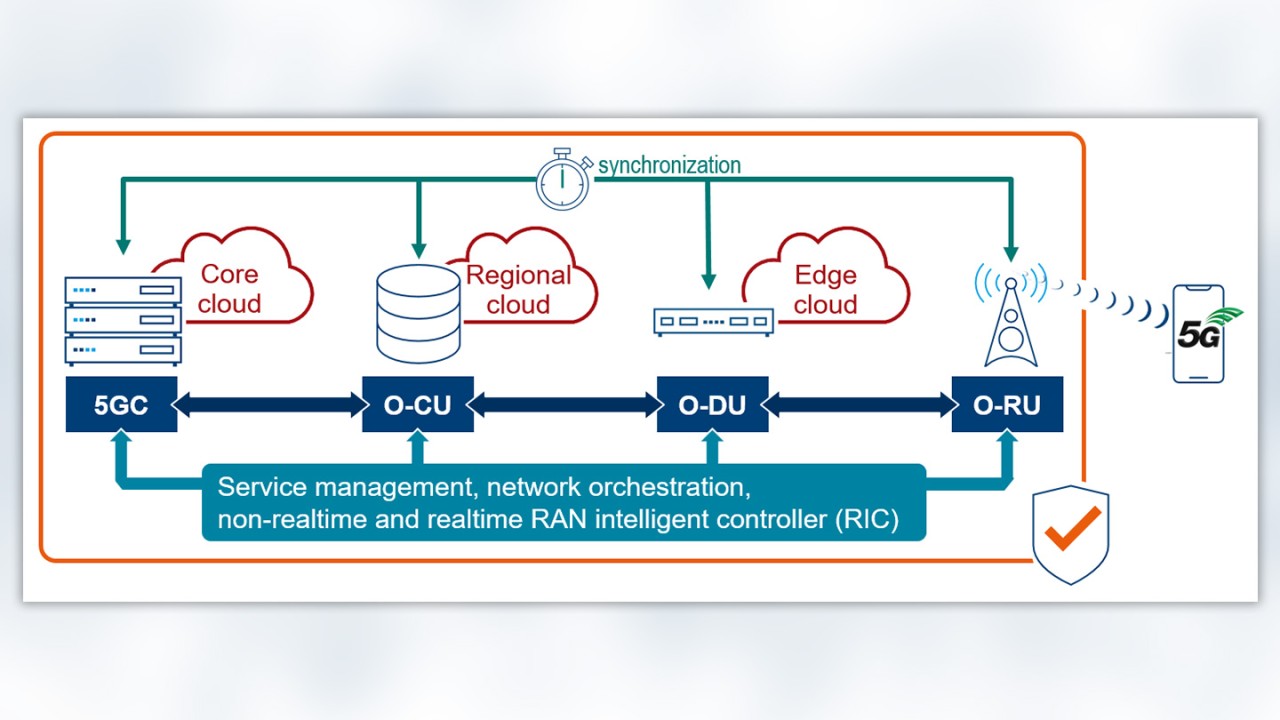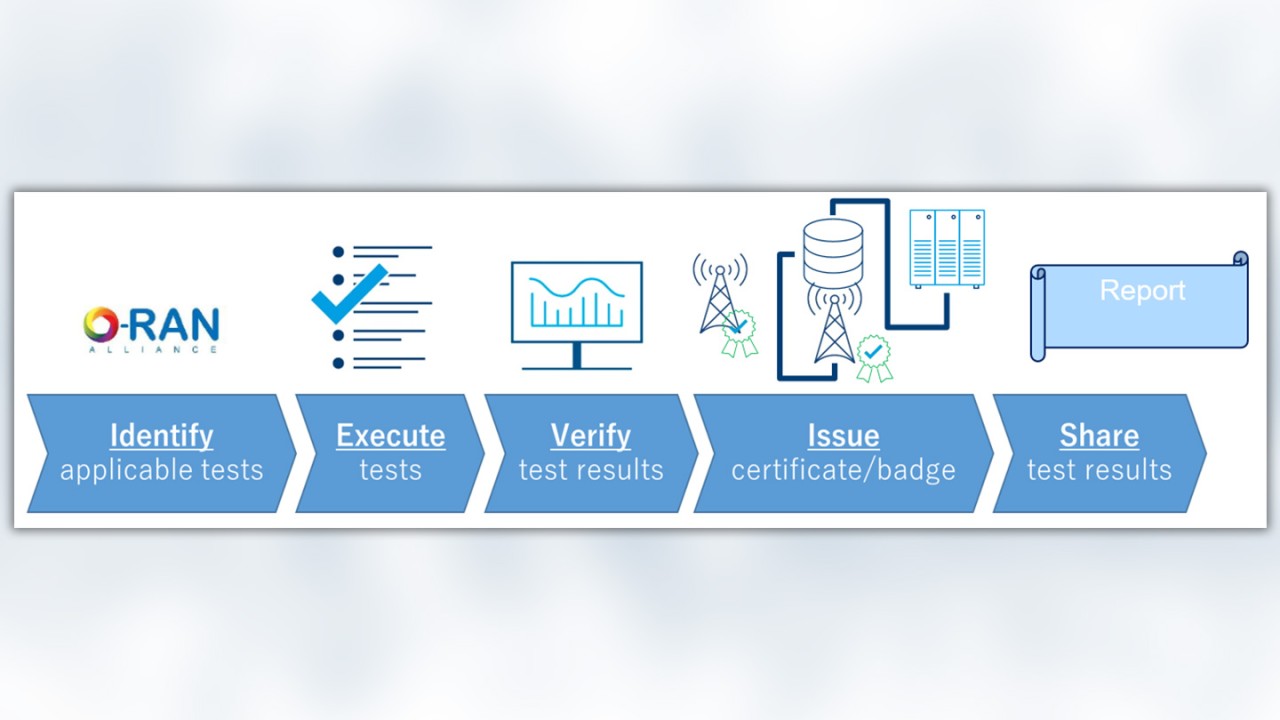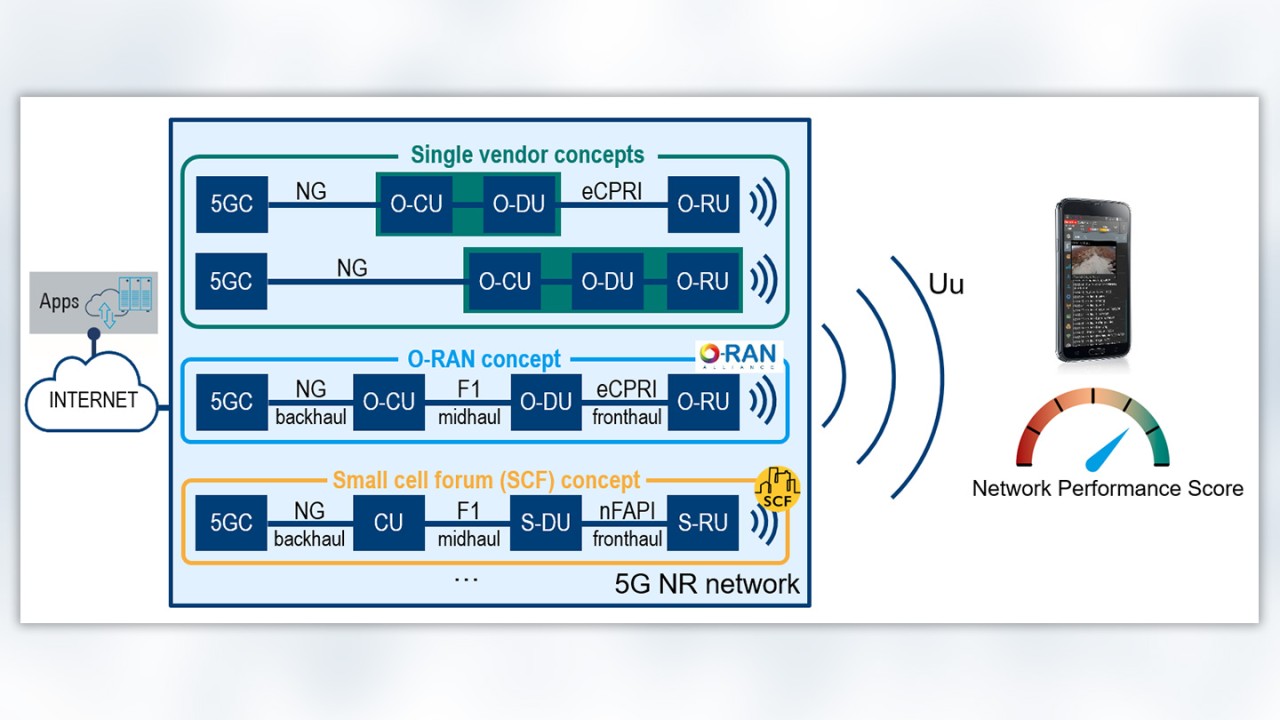Written by Magnus Hylén | January 31, 2022


Overview
Open RAN stands for open radio access network (RAN) architecture. The relatively new architecture is defined by interoperable interfaces, virtualization and automation.
Leading global mobile operators are propelling the initiative and they have good reason for doing so:
- Creation of a marketplace with easier entry, greater innovation and lower prices thanks to new RAN products made mainly from off-the-shelf hardware and merchant silicon. This enables the definition and specification of radio base station functions that are divided into new logical units and interfaces for interoperability with a mix of vendors.
- Greater flexibility when selecting an expansion strategy where the best available architecture for a specific business case can be applied. Benefits include denser public network coverage and capacity or private network solutions for new vertical markets.
- Enhanced intelligence and automation to reduce deployment and operation costs, thanks to virtualization and a software driven RAN.
The key organizations behind Open RAN are:
- O-RAN Alliance, the fastest growing Open RAN community that includes 30 leading mobile network operators and 285 contributing members from the industry ecosystem
- The Telecom Infra Project (TIP), global community of companies and organizations working to accelerate the development and deployment of open technology solutions
- Small Cell Forum (SCF), a global organization whose members are committed to supporting agile, low-cost mobile infrastructure through small cells.
A the uppermost level, Open RAN is composed of radio technologies, transport networks, cloud data storage, network management and RAN intelligent controllers (RIC), time synchronization and security functions, as shown in Figure 1.


Figure 1: High level open RAN architecture
Open RAN has three key components – radio units, distributed units and centralized units (RU, DU & CU), all supported by a RAN intelligent controller (RIC). They can then be linked to existing management and orchestration systems, as well as existing 5G cores.
Challenges
Open RAN systems have to overcome a number of challenges.
Open RAN architecture must cost less than – or at least be comparable to – traditional single vendor network solutions. Mobile operators also need to be sure that they will not be forced to act as test houses.
All network elements (CU, DU, RU) must have perfect interoperability to satisfy network performance, security, reliability and stability requirements.
Different vendors will also have to discuss and agree on coordination and integration among different entities, where traditional infrastructure vendors only need to coordinate between two different teams in the same organization. And when issues arise, operators also have to speak with multiple parties instead of a single vendor.
The O-RAN Alliance uses a set of software protocol specifications, new RAN lower layer interfaces and rigorous test procedures to address interoperability challenges. However, experience dictates that protocols and interfaces never cover every single detail. And updates for different software and firmware as well as configuration updates from vendors require repeated testing. Work and spending on integration testing are set to increase and become more important to those involved, creating a new parameter for the overall business case.
Open RAN testing overview
In multi-vendor open environments, testing is crucial to interoperability and performance. The testing should cover:
- Single DUT conformance and performance
- DUT pair interoperability and performance
- E2E System performance and customer quality of experience
The O-RAN Alliance Testing and Integration Focus Group (TIFG) manages overall testing including specifications, plugfests, guidelines for test and integration centers (OTIC) as well as certification and badging procedures.


Figure 2: O-RAN Testing overview
Certification involves conformance tests with a single device under test (DUT). Badging is for interoperability tests (IOT) and end-to-end (E2E) tests. IOT testing verifies the proper interworking of two network entities, i.e. O-DU and O-RU and E2E testing verifies the key performance indicators (KPIs) for a complete system or O-RAN subsystem.
Since IOT and E2E tests involve multiple DUTs (from different vendors) the result will likely vary depending on the DUT combinations, deployment configurations and test profiles. Test execution must be efficient, reproducible and standardized for each specific combination.
O-RAN TIFG states that E2E tests are suitable for both laboratory and field environments. Laboratory tests are carried out via cables and over the air (OTA) tests are done in a shielded box/room for repeatability. OTA field testing allows evaluation of complex scenarios involving interference and mobility for more realistic radio network conditions and behavior.
Open RAN E2E field testing strategies
Open RAN success highly depends on E2E performance and uncompromised customer satisfaction, both requiring extensive lab and field testing.
Testing needs to include radio network functions such as network access and mobility, network performance and capacity and service performance (QoS and QoE). Correct cell level time synchronization for time division duplex (TDD) operations is also required since problems with slot and frame synchronization can significantly degrade network performance.
A comprehensive field testing strategy can cover all of this and should include methodologies, tools and solutions for:
- Engineering in the pre-commercial phase (before roll-out) with lab testing and field trials
- Site testing and performance tuning after deployment
- Optimization and troubleshooting in operational networks
- E2E quality benchmarking to compare different vendors and RAN architectures
- E2E quality monitoring for 24/7 surveillance of the network capacity, stability and integrity
The lab testing and field trial methodology should include the E2E test cases defined by the O-RAN Alliance TIFG. These include functional verification testing, such as network access/registration procedures and mobility handling, performance testing to check data scheduling, data transport capacity and the efficiency of TCP and UDP protocols as well as service testing of voice, video and data service performance. The tests are a major part of the pre-commercial phase.
The TWAMP interactivity test is an innovative testing method from Rohde & Schwarz Mobile Network Testing that analyzes bitrate, latency and continuity of packet streams to mimic different application classes. New interactive, real-time use cases and applications in public and private 5G networks are needed for both humans and machines. In the industrial environment we are anticipating several interactive applications such as AGV, robot control, AR/VR, etc.
Optimization and troubleshooting in operational networks are pretty much the same for both legacy or new architectures. It still requires RF based testing for coverage analysis, interference hunting, time synchronization verification, EMF verification and network performance testing to check network availability, voice call and data throughput integrity.
The best practice for evaluating and benchmarking different network architectures is the ETSI methodology described in TR 103 559. It measures perceived end-to-end quality from the end user perspective while also remaining transparent and technologically agnostic, making it ideal when comparing different RAN architectures.


Rohde & Schwarz Mobile Network Testing has the right tools and solutions for the field testing strategy described above. The MNT Solution platform is a fully integrated portfolio of products covering all use cases and test scenarios throughout the lifecycle of a mobile network.
The QoE-centric network performance score (NPS) is our version of the ETSI methodology that uses a single metric to characterize overall network performance.
Learn more about our solutions for Open RAN testing in our webinar "Open RAN – network performance in the lab and in the field".






